
Category: Vault-Treasure Tuesdays
Some older recordings make you want to ask, “How much have we really learned in 50 or 60 years?”
Frederica von Stade: Canteloube, Songs of the Auvergne, Album I
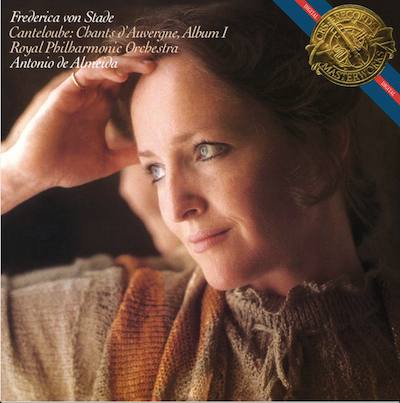
Frederica von Stade: Canteloube, Songs of the Auvergne, Album I (1982)
CD CBS MK 37299 (o.o.p.) and Sony Essential Classics CD 63063
(also o.o.p.; but available as just-in-time replicated from Arkivmusic)
Frederica von Stade, mezzo-soprano; the Royal Philharmonic Orchestra, Antonio de Almeida, conductor. David Mottley, producer; Peter Brown, engineer.
I treasure the wonderful folk-song orchestrations on this recording so much; I have, since it first came out on LP. However, its comparative obscurity today tempts me to think that my enthusiasm for a recording really is The Kiss of Death. This recording is Out of Print from Sony? Are you kidding me?
At least Clifford Brown With Strings and Sleeping Gypsy are still in print. Sigh.
Frederica von Stade signed up at New York’s Mannes School of Music as a part-time student in order to learn how to read sheet music—but only for her own enjoyment. Some faculty members recognized her potential, and urged her to apply for full-time status. In less time than it takes to earn an undergraduate degree, she had learned enough about singing and the repertory to audition for the Metropolitan Opera. The Metropolitan Opera immediately offered her a three-year contract; the rest, as they say, is history (a history that includes more than 75 major-label recordings).
(Despite the above’s having “the additional benefit of being the truth,” I think that if somebody were to write that story into a movie script, people would say, “Yeah, right. Get serious!”)
More info, and sound bytes, after the jump. This is a touchstone CD that is well worth the effort to find. Just find it and BUY IT! Continue Reading →
Arturo Delmoni & Yuri Funahashi: Amy Beach Violin Sonata (complete performance)
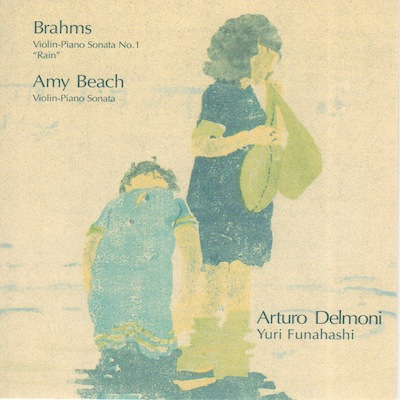
Tuesday, September 5, 2017 is the 150th anniversary of the birth of Amy Marcy Cheney Beach (September 5, 1867 – December 27, 1944). To quote Wiki: “She was the first successful American female composer of large-scale art music, breaking a glass ceiling when her ‘Gaelic’ Symphony was performed by the Boston Symphony Orchestra in 1896.”
Arturo Delmoni asked me to upload not just sound bites but instead his and Yuri Funahashi’s entire recorded performance (from CD JMR 2, which a third-party seller on Amazon would like you to pay $1,526.83 for a new copy of—but there is a bottom-feeding underbidder asking only $166.99; such are the values of my back catalog on the crazy collector market).
After the jump there are: a photo of Mrs. H.H.A. Beach (as she wished to be known); m4a embeds of all four movements of her Sonata in A minor, Op. 34; and the relevant section of my liner-note essay.
Happy Birthday, Mrs. Beach!
John Coltrane’s “Giant Steps,” Animated Representation
John Coltrane would leave for a road trip with the Quartet carrying nothing but his horn case and the Slonimsky book.
—McCoy Tyner
John Coltrane (1926-1967) is generally recognized as one of the most significant saxophonists in music history. However, at times I wonder whether the famous phrase applied to his playing—”Sheets of sound”—actually might lead the unwary to underestimate his talent, work ethic, and achievements. Such is the problem with music-history courses graded via multiple-choice examinations. “Coltrane???” “Oh, yeah—Sheets of sound!” A bit reductive… .
In truth, Coltrane was quite a Music Theory Nerd. He owned a copy of Nicholas Slonimsky’s fearsome Thesaurus of Scales and Melodic Patterns, and had memorized much of it. (That book, first published in 1947, includes more than a thousand musical examples, the majority being not in traditional Western major or minor scales.)
The title track of Coltrane’s LP Giant Steps (recorded 1959) moves through three keys separated by major thirds… hence the giant steps. The tight structuring of this brief musical gem should dispel the impression that Coltrane was just making random noises. The animated graphical representation by Michal Levy is in its own way a great work of art, too.
# # #
Joel Fredericksen and Ensemble Phoenix Munich: “Requiem for a Pink Moon”
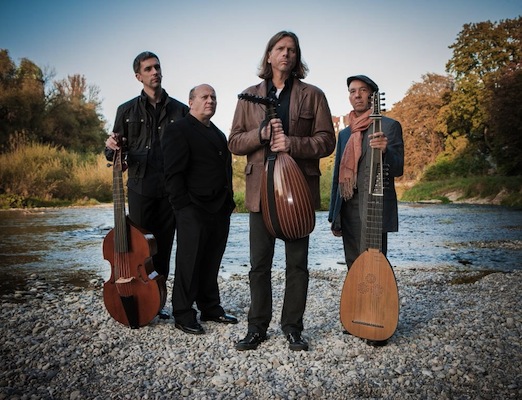 Photo Thomas Zwillinger, courtesy of Harmonia Mundi.
Photo Thomas Zwillinger, courtesy of Harmonia Mundi.
Joel Fredericksen and Ensemble Phoenix Munich: Requiem for a Pink Moon
CD Harmonia Mundi HMC 902111 (recorded 2012)
(No high-resolution download available, apparently.)
Joel Fredericksen, bass voice and lute; Timothy Leigh Evans, tenor voice and drum; Domen Marincic, viola da gamba; Axel Wolf, theorbo and archlute; producer and engineer not credited.
Back in December, in my coverage of the Wilson Audio/MSB event at Fidelis AV in New Hampshire, I mentioned how the late-stayers were moved by the cuts I played from Joel Fredericksen and Ensemble Phoenix Munich’s Elizabethan Nick Drake tribute Requiem for a Pink Moon. You could have heard a pin drop. If that album is unknown to you, here’s a brief précis:
The idea of classical bass singer Joel Frederiksen and Ensemble Phoenix Munich’s putting together an early-instruments Elizabethan tribute album to Nick Drake might strike you as daft, as it did me. But, it works. It’s the real deal. There was a melancholic plaintiveness to Drake’s music that is not at all far from the Elizabethan temperament. Frederiksen of course sings both beautifully and un-selfconsciously. But what makes this recording one of the most affecting I have heard in years is that the interleaving of Elizabethan laments and parts of a Gregorian Chant Requiem Mass with Drake’s songs makes such a powerful connection to the universal human experiences of loss and grief, and not just to one particular artist or album. Buy one for yourself, and buy several to give as gifts.
1,000 Years of Western Music History in 6 Tracks
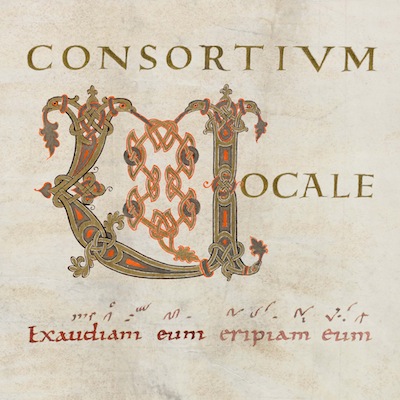
I love to introduce people to pieces of music (or entire albums) I think should be parts of our shared cultural inheritance but which, for whatever reason, remain comparatively obscure. A prime example is Clifford Brown’s Clifford Brown With Strings. I also love to put together playlists that create a narrative arc (that’s fancypants-speak for, “tell a story”).
I was chatting with my friend Doug White, of the Philadelphia-area specialty high-end audio dealer “The Voice That Is.” The subject was the then-upcoming visit from John Atkinson, Jana Dagdagan, and Herb Reichert, all from Stereophile magazine. I volunteered to put together a playlist of high-resolution classical tracks that could do double duty as system-showing-off demo fodder while at the same time providing memorably engaging musical experiences. (Note, I think that the word “classical” is stretchy enough to encompass “Bridge Over Troubled Water.”)
I began sifting through my various lists of demo tracks. It soon became obvious to me that I could profitably fill just about one hour of listening by playing six tracks, all from the Norwegian audiophile label 2L. The tracks are in four parts: Two pairs of shorter tracks that share some aspects, and then two longer tracks from contrasting musical forces and genres. The gamut runs from a-cappella choral music through organ music and solo-piano music, ending with orchestral music. Continue Reading →
John Barry: “Somewhere In Time” Soundtrack (1998 re-recording)
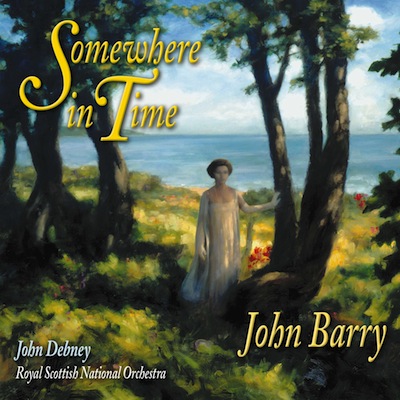
Film-score composer John Barry’s father owned movie theaters in England. So, in a sense, Barry (1933-2011) grew up in the movie business. (The family name was “Prendergast;” Barry used his first and middle names as his professional name.) The movie business and the music business are similar, in that fickle public tastes can make or break projects and careers. Also similar in that the process of actually getting paid can be… quirky.
John Barry composed the scores for 11 James Bond films including Goldfinger, as well as for Body Heat, Born Free, Dances With Wolves, Out of Africa, The Lion in Winter, and Midnight Cowboy. Barry’s film scores won him five Academy Awards and four Grammys. However, it is almost certain that Barry’s most popular (and profitable for him) film score was for a film that was decidedly unsuccessful upon its original theatrical release, finding a larger audience only on cable tv, and then a bit later with the advent of home video on VHS cassettes.
That film is the 1980 time-travel romantic drama Somewhere in Time. The story of Barry’s score’s musical debts to Rachmaninoff and Paganini comes after the jump. Continue Reading →
Abraham Lincoln, a True Opera Lover (Really!)
This can serve for St. Valentine’s Day, and for President’s Day too!
Abraham Lincoln might have been a log-splitter who had been born in a log cabin; but, at some point in his adult life, Lincoln turned into a true opera lover. (Please remember, opera was what entertained people before movies came along.) In the month before he was murdered, Lincoln was at Ford’s Theater to hear Mozart’s opera The Magic Flute (which had to have been sung in German, because there was no English-language performing version at the time).
More? Lincoln’s favorite opera was von Flotow’s Martha, which was performed as part of the festivities attending his second inauguration. Although German in language, Martha was French in style, with a setting and a plot entirely made up of English-Romantic story elements, such as the two bored upper-class girls who, on a lark, decide to enlist as hired servants. Yeah, right. Of course, one girl finds true love, fast. The upper-crusty beloved, of course, has agonies over his having fallen in love with a serving girl. But, how can our well-born heroine admit that she was an imposter? Or impostress?
Lincoln loved it. He most likely heard it in the original German, though Martha was such a wildfire hit that versions in French and Italian came quickly (with English a bit later). Even later, Enrico Caruso made parts of the Italian version popular hits on record from 1906 on.
More, after the jump. Continue Reading →
Wise Men From the East, Bearing Gifts! (Part 1)
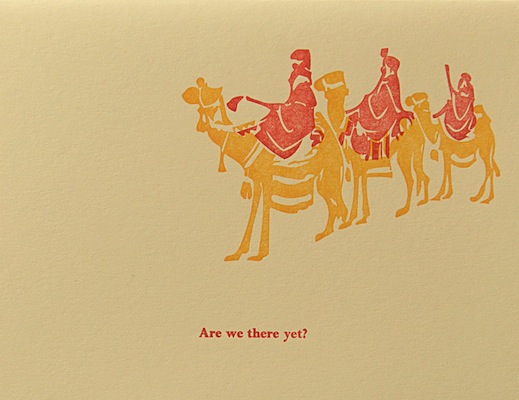 Letterpress art print © and courtesy of Zeichen Press.
Letterpress art print © and courtesy of Zeichen Press.
The Gospel narrative doesn’t say that the number of wise men (or astrologers) from the East was three; that’s just an inference based upon the report that the Magis (however many of them there were) brought three gifts of gold, Frankincense, and myrrh.
Be that as it may, what has come down is a piously embellished story of three wise men, complete with names and capsule biographies.
So, to start my suggestions for Christmas (or other seasonal) gift-giving, here are three gifts: two boxed sets and one single recording, all of especial musical and sonic merit.
Details and sound samples after the jump! Continue Reading →
Christmas Music (Part 3): Arturo Delmoni & Friends “A String Quartet Christmas”
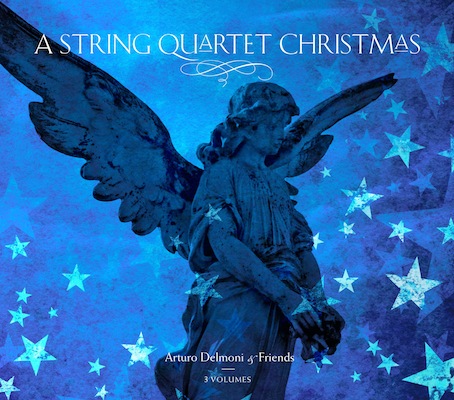 A String Quartet Christmas
A String Quartet Christmas
Arturo Delmoni & Friends
Steinway & Sons Recordings 3-CD set 50001
(All volumes produced by John Marks and mastered by Bob Ludwig. Volume One recorded 1995 by David Hancock at the Church of the Holy Trinity, NYC; Volumes Two and Three recorded by Jerry Bruck at the Recital Hall of the SUNY Purchase Conservatory of Music in 1997 and Riverside Church NYC in 1998, respectively.)
I produced the three volumes that make up this set for my own micro-boutique/audiophile label John Marks Records, commonly known as JMR. The idea was to present traditional and sacred Christmas music in straightforward, un-gimmicky arrangements, recorded in orthodox stereo (so to speak) in an acoustically-appropriate space. In the case of Volume One, that was New York City’s Holy Trinity Church, a photo of which can be found after the jump, along with sound samples. Continue Reading →
Christmas Music (Part 2): “Christmas Night,” The Cambridge Singers
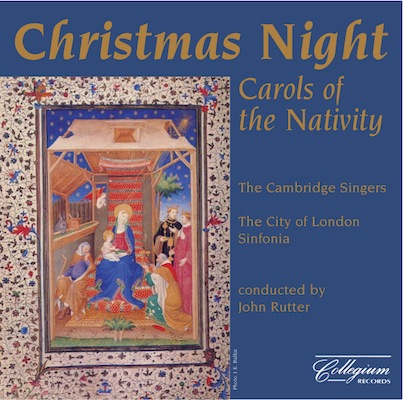
Christmas Night – Carols Of The Nativity
The Cambridge Singers and the City of London Sinfonia,
conducted by John Rutter.
Collegium CD 106 or download
(Recorded January 1987 by the BBC Transcription Unit in the Great Hall of University College School, London. Jillian White, producer; Campbell Hughes, engineer.)
A few years back, my friends at Steinway & Sons asked me to write about a favorite Christmas album for their music and culture magazine Listen.
Here’s what I wrote then, and I still feel the same way:
I received this recording as a Christmas present from violinist Arturo Delmoni. It quickly became an all-time family favorite, not only for its world-class singing and vocal ensemble (a young Mark Padmore is in the tenor section) but most of all for its consistently tranquil and gently enveloping sound-world—just like a lullaby, except more varied and musically interesting. (Arturo Delmoni, of course, knows something about Christmas music, in that he led the string quartet in the three Rejoice! A String-Quartet Christmas projects.)
More comments, and sound samples, after the jump. Continue Reading →


